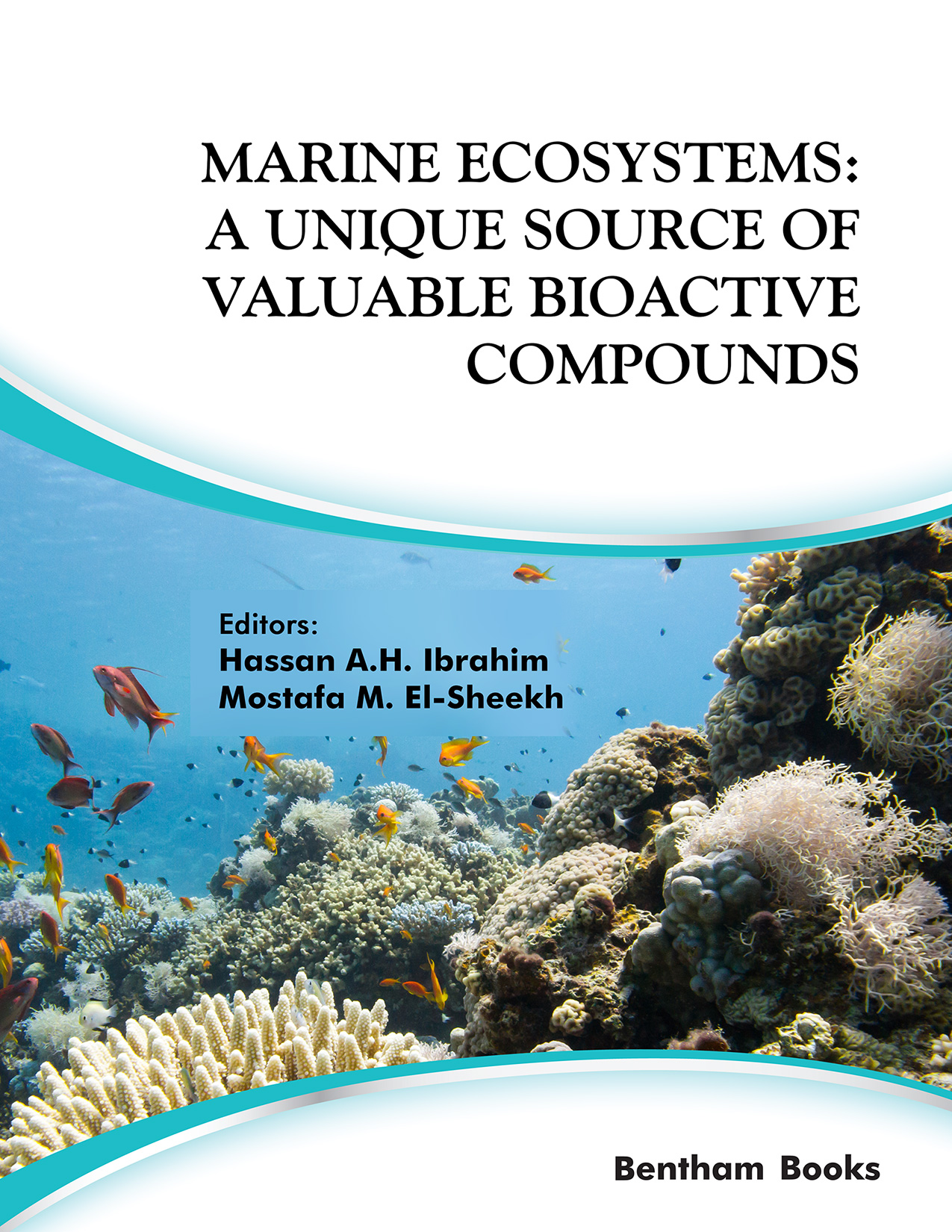Each marine ecosystem, including the open ocean, the deep-sea ocean, and coastal ecosystems, has different components with different physical and biological characteristics. Therefore, marine ecosystems have variability with a wide array of habitats involving mainly seaweeds, seagrasses, coral reefs, and mangroves besides estuaries and various protected areas.
Primarily, the productivity of a certain marine ecosystem refers to the organic matter production by producers or autotrophs (phytoplankton and algae), where the produced organic carbon is supplied to heterotrophs, which obtain their energy only from the organic matter respiration.
Mangrove environment microorganisms provide a large supply of antimicrobial substances creating a broad spectrum of major health chemicals such as enzymes, antitumors, insecticides, and immune modulators. Although the ecology of mangroves is highly diverse in microbiological conditions, less than 5% of species are characterized. In many cases, their ecological role and their potential application are unknown. Recently developed molecular biology and genetics technologies hold a great promise for exploring the potential of microbial diversity. In addition, the antimicrobial potential of the “macroalgal epiphytic microbiome” and the application of “meta-omics” approaches are significant for further exhaustive exploitations of this unique microbiome for future drug discovery.
Most marine biota can survive under stress conditions, as a result, they produce complex metabolites with unique biological properties. These natural substances could be used as functional constituents in the food sector. Moreover, they could aid in the treatment of a wide range of different diseases, including antitumor, anti-inflammatory, antimicrobial, etc.
Microalgae and phytoplankton are rich sources of various pigments like carotenoids, beta-carotene, and polyunsaturated aldehyde. Seaweeds are abundant in vitamins A and C, and also in phenolic compounds, terpenes, etc. Primary consumers like crustaceans and mollusks are reported to produce steroids having high medicinal potential. Carnivorous fishes like herring, shad, and mackerel are the secondary consumers. Mackerel is a great source of the amino acid taurine, which is considered to have beneficial effects on heart health. Top carnivorous fishes like the haddock or cod belong to the category of tertiary consumers. Cod is popular for its “cod-liver oil” which has high contents of vitamins A, D, and E and omega-3 fatty acids whose health benefits are familiar to all. Even the decomposers like marine bacteria and fungi are effective manufacturers of alkaloids, terpenes, peptides, and mixed biosynthetic compounds derived from polyketides. Thus, it will not be an exaggeration to say that the marine ecosystem has a plethora of bioactive compounds, and it can easily be proclaimed that collective efforts in the form of copious research and documentation are required to enable sustainable utilization of this untapped bioresource. This confirms that marine organisms offer a delicate, yet plentiful source for a vast array of novel products whose unique structural features make them suitable drug candidates.
Many challenges threaten the marine ecosystem like climatic change, biological invasions, overexploitation, overfishing, and water pollution. These challenges negatively affect marine biodiversity and then productivity. Human activities, also, place diverse stresses on marine ecosystems, which are predicted to increase, resulting in great impacts on marine ecosystems and then on biodiversity. So, they must be overcome for the potential preservation of various lives in the marine environment. Moreover, numerous challenges threaten the marine natural system, particularly in the field of marine drug discovery. The primary issues include the impact of climate change on marine biodiversity, biological invasions, overfishing, pollution, and habitat destruction, often occurring together in time and space, and have a cumulative effect. Although the additional costs, like specialized services for divers, submarines, staff safety, and costs, can add up quickly, several marine-based medications are actively being developed for commercial use.
Natural bioactive products are up against vast chemical libraries and combinatorial chemistries in the fight for market share. As a result, each stage of a natural product program, from environmental sampling and strain selection to metabolic expression, genetic exploitation, sample processing, and chemical dereplication, must be more effective than ever. Oceans and their immense biodiversity have gifted humanity with a pathway out of the obstacles of health care. The constant need for innovation has been a great challenge for the pharmaceutical industry especially finding new sources for active compounds.
The development of a certain marine drug involves the creation and analysis of large amounts of data, requiring the interaction of scientists from the scientific and industrial communities. Efficiently, the collaboration shares the knowledge, tools, finances, and administrative processes, hence increasing the innovation potential of all parties than a single one. Specifically, at the academic level, the quality of collaboration is evaluated in the number of co-authored articles over some time.
Collectively, the current book has twelve chapters to highlight the biodiversity and productivity of marine ecosystems covering their protected areas and explaining all biotic and abiotic factors that affect the viability of this ecosystem. In addition, it spotlights the potentiality of the biological activities that have been detected by marine organisms. Moreover, it presents an effective strategy for drug discovery from these features. Indeed, this book aims at researchers’ students, ecologists, microbiologists, pharmacologists, and biotechnologists working with the living components of the marine environment providing those with the recent information and strategies in the field of drug discovery from unique marine features and resources.
Hassan A.H. Ibrahim
Marine Microbiology Laboratory
Marine Environment Division
National Institute of Oceanography and Fisheries (NIOF)
Cairo, Egypt
Mostafa M. El-Sheekh
Phycology, Botany and Microbiology Department
Faculty of Science
Tanta University
Tanta
Egypt

